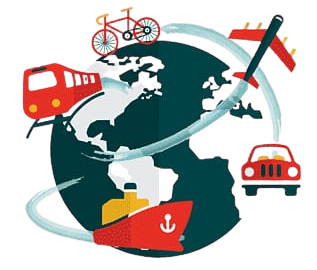Airlines Ticketing
An airline ticket is an electronic document or record issued by an airline or travel agent that confirms that an individual is entitled to a seat on a flight on an aircraft. Airfares can be of two types:
⇒ A paper ticket, including a coupon or voucher
⇒ An electronic ticket (commonly known as an e-ticket).
The ticket, regardless of its form, is required to have a boarding pass when checking in at the airport. Then, with the boarding pass and ticket attached, the passenger is allowed to board the plane.
The time on the flight ticket usually corresponds to the local time zone where the flight will arrive at that time.
A ticket is usually only valid on the airline on which it was purchased. However, an airline can confirm tickets so that other airlines can accept tickets, sometimes pending or confirmed seats. Usually the ticket is for a specific flight. An “open” ticket can also be purchased, allowing travel on any flight between the destinations listed on the ticket. Costs more than one ticket for a particular flight. Some tickets are refundable. However, the cheapest tickets are usually non-refundable and may have additional restrictions.
Only one passenger can use one ticket. If multiple passengers travel together, the tickets are linked using the same check-in locator or reservation number, specified if the tickets were purchased at the same time. In addition, most airlines can cross tickets with each other in their reservation system. This allows all members of a group to be treated in a group, allowing to assign seats together (if available at the time of assignment).
Issuing an air ticket
Itineraries with multiple passengers on the same booking with one ticket number per passenger
A fare-paying passenger on an airline must have a valid ticket issued. For a ticket to be issued, there are two separate processes; both are needed :
Reservations
Itinerary reservations are made in the airline’s system, either directly by the passenger or by the agent. Itinerary includes all of the above details needed to issue an airline ticket, except for the ticket number.
Once the reservation is made, a passenger name record (PNR) will be created and will be used to manage the booking and check-in. There can be more than one passenger in a passenger name record provided that all passengers have the same itinerary and the same fare type.
Emissions
The reservation itself does not allow the passenger to travel. It is only when the airline receives the payment or the passenger redeems the miles/points that the ticket is issued, linked to the booking, and allowed to travel.
